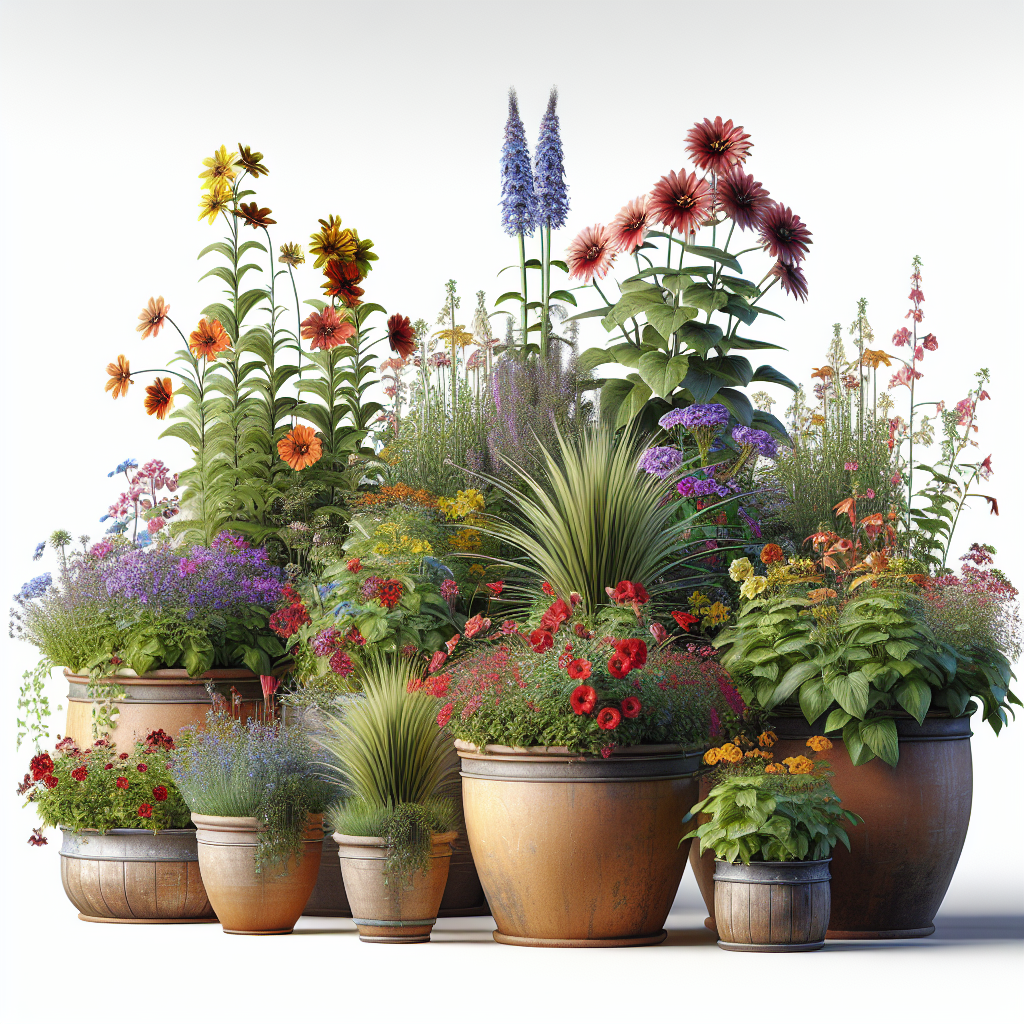Container gardening is a popular way to add color and beauty to any outdoor space, from small balconies to spacious patios. One of the key decisions when planning a container garden is what type of plants to include. While some may opt for all perennials or all annuals, mixing the two can create a dynamic and ever-changing display throughout the growing season. By combining perennials and annuals in container gardens, you can enjoy the best of both worlds – the long-lasting beauty of perennials and the vibrant colors of annuals.
In this article, we will explore the benefits of mixing perennials and annuals in container gardens, as well as provide tips on how to successfully combine these two types of plants for a stunning display. Whether you are a seasoned gardener looking to experiment with new combinations or a beginner interested in trying your hand at container gardening, this guide will help you create a beautiful and thriving container garden that will be the envy of your neighbors. So grab your gardening gloves and let’s get started!
**Choosing the Right Plants**
When it comes to mixing perennials and annuals in container gardens, choosing the right plants is key to creating a harmonious and visually pleasing display. Perennials are plants that come back year after year, while annuals typically only last for one growing season. When selecting plants for your container garden, consider both their growing habits and their sun requirements.
For example, if you have a sunny spot on your patio that gets full sun for most of the day, you may want to choose plants like petunias (annual) or daylilies (perennial) that thrive in these conditions. On the other hand, if you have a shady corner that only gets dappled sunlight, ferns (perennial) or impatiens (annual) would be better choices. By taking into account each plant’s specific needs, you can ensure they will thrive together in your container garden.
**Creating Visual Interest**
One of the main advantages of mixing perennials and annuals in container gardens is the ability to create visual interest through contrasting colors, textures, and heights. When planning your container garden, think about how different plants will look together – consider pairing tall spiky flowers like delphiniums (perennial) with low-growing groundcovers like creeping thyme (perennial) for an interesting contrast in height.
Additionally, mix plants with different leaf shapes and textures to add depth and dimension to your arrangement. Pair bold foliage plants like coleus (annual) with delicate flowers like astilbe (perennial) for an eye-catching combination that will stand out in your garden.
**Tips for Success**
To ensure success when mixing perennials and annuals in container gardens, be mindful of watering needs and soil requirements for each plant. Perennials often have deeper root systems than annuals, so make sure your containers have enough room for roots to grow freely.
Consider using a well-draining potting mix specifically formulated for containers to ensure proper drainage – waterlogged soil can lead to root rot and other problems for your plants. Water consistently but avoid overwatering – check soil moisture levels regularly by sticking your finger into the soil; if it feels dry an inch below the surface, it’s time to water.
Additionally, fertilize regularly with a balanced fertilizer according to package instructions to promote healthy growth throughout the growing season. Deadhead spent blooms from annual flowers regularly to encourage new growth and prolong blooming periods.
**FAQ**
1. Can I mix shade-loving perennials with sun-loving annuals?
– While it’s generally best to group plants with similar light requirements together for optimal growth, some shade-loving perennials can thrive alongside sun-loving annuals if placed strategically in part-sun conditions.
2. How often should I fertilize my mixed container garden?
– Fertilize every 2-4 weeks during peak growing season with a balanced fertilizer diluted according to package instructions; adjust based on individual plant needs.
3. What should I do with my mixed container garden during winter?
– Move frost-tender annuals indoors or discard them after first frost; protect hardy perennial roots by insulating containers against freezing temperatures outdoors or overwintering indoors as needed.
By following these tips and incorporating a variety of perennials and annuals into your container garden design, you can create a beautiful oasis right outside your door that will bring joy throughout the seasons! Happy planting!













